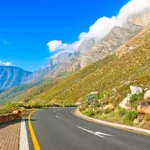Beyond the Atlantic, the Indian Ocean slave trade uprooted an estimated 4–6 million Africans over a millennium. Explore its key routes, markets, and lasting legacies across East Africa, Arabia, Persia, India, and beyond.
A Vast Network in the Shadows
When the “slave trade” is mentioned, most think of the transatlantic passages to the Americas. Yet from the 9th to the 19th century, a parallel network of human trafficking stretched eastward across deserts and seas connecting Africa to Arabia, Persia, India, and Southeast Asia.
The Indian Ocean slave trade forcibly moved millions of East Africans—men, women, and children into lives of servitude that spanned continents. They harvested sugar in Iraq, served in royal harems in Muscat, built cities in Persia, and dove for pearls in Bahrain. This hidden chapter shaped cultures, economies, and diasporas and its legacies remain imprinted in names, faces, and forgotten narratives today.
Key Routes, Hubs & Vessels
Inland Caravans
Captives were taken from deep in the continent modern-day Uganda, Malawi, Mozambique, the Congo Basin, and the Great Lakes region. They walked hundreds of miles to the coast, sometimes chained in groups, surviving harsh terrain and brutal treatment.
Swahili Coast Ports
- Zanzibar & Kilwa Kisiwani (Tanzania): The largest slaving ports by the 18th–19th centuries, especially under Omani rule. At peak, Zanzibar processed up to 50,000 enslaved people annually.
- Lamu & Mombasa (Kenya): Smaller but strategic outlets, ferrying captives to Arabia and India aboard seasonal dhows.
- Mozambique Island & Sofala: Portuguese-controlled ports linked to Goa and Basra through imperial trade routes.
Sea Lanes & Vessels
- Dhow ships followed monsoon winds from East Africa to Oman, Iraq, Persia, and India reaching even the Maldives, Indonesia, and coastal China.
- Though small, these vessels often overloaded to double capacity, resulting in mortality rates rivaling those of the Middle Passage.
- Portuguese carracks also ferried enslaved Africans between Mozambique and Goa.
Who Was Enslaved and why?
Agricultural Labor
Thousands of East Africans worked on date palm plantations and sugar fields in the marshlands around Basra, southern Iraq under blistering conditions.
Domestic Servitude & Concubinage
Women and girls were sold into elite households across Oman, Persia, and India forced into roles as concubines, nannies, or eunuch-guarded attendants.
Skilled & Military Roles
Some were trained as soldiers (ṭurābīya), palace guards, builders, blacksmiths, or pearl divers essential to the wealth and defense of Gulf cities.
The Zanj Rebellion (869–883 CE)
One of history’s largest and most successful slave uprisings. Thousands of East African laborers in southern Iraq revolted against the Abbasid Caliphate, establishing a breakaway state before it was finally crushed. It stands as a symbol of resistance and agency.
Religion, Identity, and Cultural Fusion
Islamic Loopholes & Justifications
Though Islam prohibited enslaving fellow Muslims, traders often labeled captives as “pagans” or declared them spoils of war. This rationalized continued trafficking despite Quranic teachings.
Conversion & Manumission
Many enslaved people converted to Islam sometimes willingly, often not. Conversion occasionally led to freedom or upward mobility, and some became respected scholars, merchants, or artisans.
Afro-Arab & Swahili Cultures
Centuries of intermarriage produced Afro-Arab communities in places like Lamu, Zanzibar, and Muscat. Swahili rooted in Bantu but rich in Arabic emerged as a lingua franca. Shared cultural traditions include:
- Cuisine (pilau rice, coconut curries).
- Music (taarab with Arab & African rhythms).
- Architecture (coral stone houses, ornate wood carvings).
️Zanzibar: The Epicenter
Under Sultan Seyyid Said of Oman (r. 1804–1856), Zanzibar became the nerve center of the Indian Ocean slave trade.
- Trade Volume: Up to 50,000 enslaved people annually passed through its markets, exchanged for ivory, spices, or cash.
- Clove Plantations: Labor from enslaved East Africans powered the island’s profitable clove industry.
- Colonial Architecture: Today’s tourist sites—like the House of Wonders and Slave Market Memorial bear silent witness to this tragic era. Underground holding cells, still preserved, reflect the dehumanizing conditions captives endured.
Legacies & Diasporas
Afro-Middle Eastern Communities Today
- Afro-Omanis, Afro-Iraqis, Afro-Iranians, and the Sheedi people in India and Pakistan trace their ancestry to enslaved East Africans.
- Despite deep roots, many of these groups face marginalization, discrimination, or cultural invisibility.
Linguistic & Cultural Influence
- Swahili is heavily laced with Arabic e.g., karibu (welcome), mafuta (oil).
- Culinary and musical traditions from the trade era remain embedded in East African and Gulf cultures.
Collective Amnesia
Unlike the transatlantic slave trade, the Indian Ocean trade has fewer memorials, less academic attention, and scant political recognition. But its emotional, demographic, and cultural imprints endure.
Abolition & Aftermath
- British Pressure: Britain’s Royal Navy began patrolling Indian Ocean routes after 1873, disrupting the trade.
- Zanzibar’s Ban (1897): Sultanate, under British protectorate influence, officially outlawed slave sales.
- Persisting Exploitation: Covert slavery and bonded labor persisted into the 20th century.
- Late Abolition: Slavery was formally outlawed in Saudi Arabia in 1962 and in Oman in 1970 long after European colonies ended it.
Modern Echoes
Today’s human trafficking corridors between East Africa and the Gulf particularly for domestic workers mirror older trade patterns, raising urgent ethical and policy questions.
Final Reflection: Restoring Forgotten Histories
The Indian Ocean slave trade was vast, complex, and deeply consequential. To understand the full story of African enslavement, we must look both west and east across oceans and cultural boundaries.
These lesser-known routes carried more than bodies—they carried resilience, rebellion, and rich cultural fusion. In telling these stories, we honor the ancestors whose lives were taken—and empower future generations with a more complete, more honest understanding of global history.
Related Posts
-
From the Sahara to the Cape: Africa’s Most Scenic Road Trips
Discover Africa's most breathtaking road trip routes from Morocco’s Atlas Mountains to South Africa’s Cape…
-
500 Kenyans Removed from the Wealth List
Five hundred Kenyans were dropped from the exclusive list of dollar millionaires in 2023. This…
-
Riding the rails: Kenya’s SGR and the future of east
Dawn at Nairobi Terminus At 6:00 a.m., the cavernous hall of Nairobi Terminus hums with…


